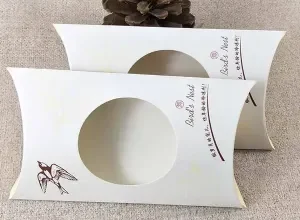
In the world of visual arts, the dynamic duo of oil paint and paint brush has long been revered for their transformative power on canvas. The marriage of these two artistic tools creates a symphony of colors and textures that captures the imagination and emotions of both artists and viewers alike.
In this exploration, we dive into the fascinating world of oil paint and the magic woven by the paint brush, examining their historical significance, unique characteristics, and the unparalleled synergy they bring to the realm of fine art.
Historical Evolution of Oil Paint:
The roots of oil painting can be traced back to ancient civilizations, but it was during the Renaissance that this medium truly flourished. Artists like Jan van Eyck and Leonardo da Vinci pioneered the use of oil-based pigments.
Leading to a revolution in painting techniques. The slow drying time of oil paints allowed artists to achieve greater depth, detail, and luminosity in their works, as they could blend and layer colors with precision.
Oil paint consists of pigments suspended in a drying oil, commonly linseed oil. This combination results in a flexible and durable medium that allows artists to create rich, expressive compositions. The evolution of oil paint marked a turning point in the art world, enabling artists to move beyond the limitations of earlier media and explore new levels of realism and emotion.
Characteristics of Oil Paint:
Versatility and Layering:
Oil paint’s slow drying time grants artists the luxury of working on their compositions over an extended period. This characteristic allows for intricate detailing, layering, and blending of colors. Artists can build up layers of paint, creating a sense of depth and luminosity that is challenging to achieve with other mediums.
Rich Color Palette:
The pigments used in oil paints are vibrant and intense, providing artists with a vast and rich color palette. This allows for the creation of nuanced hues and subtle variations, contributing to the visual impact of the artwork.
Textural Expressiveness:
Oil paint’s viscosity and the ability to manipulate its texture make it an ideal medium for artists seeking to convey a sense of tactility in their work. Brushstrokes can be thick and impasto, or smooth and glaze-like, offering endless possibilities for textural expressiveness
Durability and Longevity:
Paintings created with oil colors are known for their durability and longevity. The slow drying process ensures that the paint bonds firmly with the canvas, resulting in a stable and enduring artwork. Many of history’s masterpieces have stood the test of time, showcasing the lasting quality of oil paintings.
The Enchantment of the Paint brush:
While oil paint sets the stage, the paint brush takes center stage in the artistic process. The choice of brushes, their bristle type, and the artist’s technique all contribute to the final masterpiece. Here’s a closer look at the enchantment of the paint brush:
Bristle Types:
Paint brushes come in various bristle types, each serving a specific purpose in the artistic process. Hog hair brushes are popular for their stiffness, ideal for bold strokes and impasto techniques. Sable brushes, on the other hand, are prized for their softness, perfect for delicate detailing and smooth blending.
Brush Shapes and Sizes:
Artists select brushes based on their shape and size, tailoring their choices to the specific needs of the artwork. Flat brushes are excellent for covering large areas, while round brushes offer precision for fine details. The variety of available brush shapes allows artists to explore diverse techniques and achieve different effects on the canvas.
Techniques and Strokes:
The paint brush becomes an extension of the artist’s hand, and the strokes applied convey emotion, movement, and energy. From broad and expressive strokes to intricate detailing, the paint brush enables artists to translate their vision onto the canvas. Techniques such as stippling, scumbling, and glazing add further dimensions to the painter’s toolkit.
Synthetic vs. Natural Brushes:
Advances in materials have led to the availability of both synthetic and natural hair brushes. Synthetic brushes offer durability, easy maintenance, and are cruelty-free, while natural brushes, often made from sable or hog hair, are prized for their unique characteristics and responsiveness to the artist’s touch. The choice between synthetic and natural brushes often depends on the artist’s preferences and the desired outcome.

The Symbiosis of Oil Paint and the Paint brush:
The true magic of fine art emerges when oil paint and the paint brush join forces. The synergy between these two elements allows artists to create visual poetry, conveying emotions, stories, and atmospheres on canvas. The tactile qualities of oil paint, manipulated by the artist’s brush, bring forth a sensory experience that captivates the viewer and transcends the boundaries of the medium.
Expressive Possibilities:
The combined expressive possibilities of oil paint and the paint brush provide artists with a vast playground for creativity. Whether it’s the bold strokes of a palette knife, the soft blending of sable brushes, or the intricate detailing of a fine liner, the symbiotic relationship between medium and tool amplifies artistic expression.
Mood and Atmosphere:
The nuanced application of oil paint, guided by the strokes of the paint brush, allows artists to evoke specific moods and atmospheres in their work. The interplay of light and shadow, texture, and color variation contributes to the creation of a visual narrative that engages and resonates with the viewer.
Capturing Realism and Abstraction:
The versatility of oil paint, coupled with the finesse of the paint brush, empowers artists to navigate between realism and abstraction seamlessly. Whether aiming for hyper-realistic details or exploring the expressive freedom of abstract forms, this dynamic duo accommodates a spectrum of artistic styles and visions.
Conclusion:
In the world of art, oil paint and the paint brush stand as timeless tools that have shaped the visual language of countless masterpieces. From the historical evolution of oil painting during the Renaissance to the modern artist’s studio, this dynamic duo continues to inspire and captivate.
The versatility, richness, and expressiveness of oil paint, coupled with the tactile magic of the paint brush, create an artistic alchemy that transcends time and resonates with the soul.
As artists continue to push the boundaries of creativity, the enduring allure of oil paint and the paint brush remains a testament to their unparalleled role in the world of fine art.



